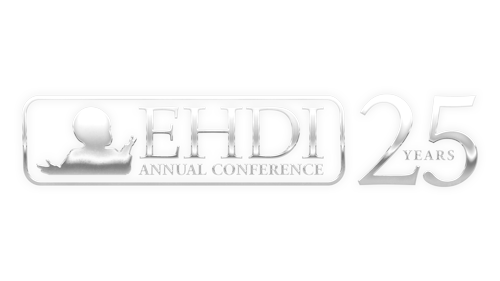2026 Early Hearing Detection & Intervention Conference
March 15-17, 2026 • Jacksonville, FL
| Improving Identification of Children at Risk for Deafblindness in the Minnesota EHDI system through EHR Chart Abstraction
Improving Identification of Children at Risk for Deafblindness in the Minnesota EHDI system through EHR Chart Abstraction
Census data from National Center on Deaf-Blindness suggests that children age 0-2 with combined hearing and vision loss may be under-identified. In 2021, Minnesota Department of Health (MDH) Early Hearing Detection and Intervention (EHDI) program served an advisory role in Minnesota Commission of Deaf, DeafBlind and Hard of Hearing (MNCDHH) strategic plan to support DeafBlind Children and Youth, facilitated by Wilder Research. During the strategic planning process, respondents and professionals highlighted the need to promote coordinated services and sharing of information among service providers. Joint Committee on Infant Hearing (JCIH) and Minnesota guidelines recommend referrals to specialty care, including ophthalmology, after a child is identified as deaf or hard of hearing (DHH). In previous years, MDH EHDI program collected data on referrals to specialty care by calling or faxing the child’s primary care provider (PCP). In 2014, 44% of children with hearing loss in Minnesota were not referred to ophthalmology by their primary care provider. Conversely, nearly 97% were referred to otolaryngology (ENT). In 2019, MDH interviewed PCPs and ENTs who both considered referrals to specialist care as part of their role. More recently, MDH - EHDI program has increased capacity for electronic health record (EHR) chart abstraction, allowing improved surveillance of both primary and specialty care throughout a health system. This quality improvement project uses EHR chart abstraction to learn how often children are referred to and evaluated by ophthalmology and whether having a risk factor for vision loss increases the likelihood of referrals to ophthalmology. Information from this project informs MDH – EHDI decisions regarding provider and family education, and how MDH – EHDI can aid system efforts to identify children who are DeafBlind as early as possible.
- Identify long term follow-up data elements regarding specialty care which are accessible by remote EHR access
- Recall the proportion of children identified as DHH that has information regarding ophthalmology referrals or ophthalmology evaluations available through EHR remote access chart abstraction
- – Identify which risk factors for deafblindness are most easily found through EHR remote access
Presentation:
3353554_14992DarciaDierking.pdf
Handouts:
Handout is not Available
Transcripts:
CART transcripts are NOT YET available, but will be posted shortly after the conference
Presenters/Authors
Darcia Dierking
(Primary Presenter), Minnesota Department of Health, darcia.dierking@state.mn.us;
Darcia Dierking, Au.D. holds pediatric audiology specialty certification and has more than 20 years of clinical and research experience working with both children and adults. Dr. Dierking works with the Minnesota Department of Health Early Hearing Detection and Intervention program as an EHDI Coordinator doing longitudinal follow-up for children who are deaf and hard of hearing.
ASHA DISCLOSURE:
Financial -
Nonfinancial -
AAA DISCLOSURE:
Financial -
Nonfinancial -
Venessa Heiland
(Co-Presenter), Minnesota Department of Health, venessa.heiland@state.mn.us;
Venessa Heiland, RHIT, is a health program representative working with long-term follow-up after a child is identified as deaf or hard of hearing. She is experienced in EHR abstraction.
ASHA DISCLOSURE:
Financial -
Nonfinancial -
AAA DISCLOSURE:
Financial -
Nonfinancial -
Melinda Marsolek
(Co-Presenter), Minnesota Department of Health, melinda.marsolek@state.mn.us;
Melinda Marsolek is an epidemiologist with the Minnesota Department of Health's Newborn & Child Follow-up Unit. She has been working with Minnesota's EHDI program since 2012.
ASHA DISCLOSURE:
Financial -
Nonfinancial -
AAA DISCLOSURE:
Financial -
Nonfinancial -
